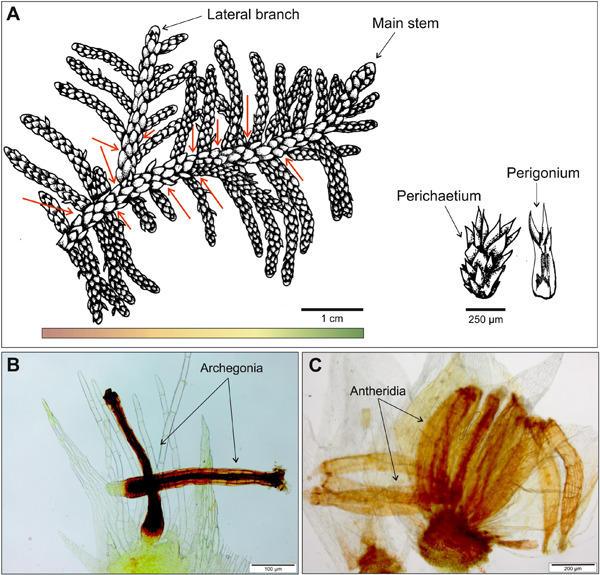Unisexual bryophytes provide excellent models to study the mechanisms that regulate the frequency of sexual versus asexual reproduction in plants, and their ecological and evolutionary implications. Here, we determined sex expression, phenotypic sex ratio, and individual shoot traits in 242 populations of the cosmopolitan moss Pseudoscleropodium purum spanning its whole distributional range. We tested whether niche differentiation, sex-specific differences in shoot size, and biogeographical history explained the spatial variation of reproductive traits. We observed high levels of sex expression and predominantly female-biased populations, although both traits showed high intraspecific variation among populations. Sex expression and sex ratio were partly explained by current macroscale environmental variation, with male shoots being less frequent at the higher end of the environmental gradients defined by the current distribution of the species. Female bias in population sex ratio was significantly lower in areas recolonized after the last glacial maximum (recent populations) than in glacial refugia (long-term persistent populations). We demonstrated that reproductive trait variation in perennial unisexual mosses is partially driven by macroscale and historical environmental variation. Based on our results, we hypothesize that sexual dimorphism in environmental tolerance and vegetative growth contribute to sex ratio bias over time, constraining the chances of sexual reproduction, especially in long-term persistent populations. Further studies combining genetic analyses and population monitoring should improve our understanding of the implications of the intraspecific variation in the frequency of sexual versus asexual reproduction in bryophyte population fitness and eco-evolutionary dynamics.

María Teresa Boquete, Zulema Varela, José Angel Fernández, Juan Antonio Calleja, Cristina Branquinho, Antonina Chilà, Nils Cronberg, Ricardo Cruz de Carvalho, Cristiana Aleixo, Belén Estébanez‐Pérez, Verónica Fernández‐González, Andrés Baselga, Carola Gómez‐Rodríguez, Juana María González‐Mancebo, Sebastien Leblond, Javier Martínez‐Abaigar, Nagore G. Medina, Encarnación Núñez‐Olivera, Jairo Patiño, Rubén Retuerto, Antón Vázquez‐Arias, Alain Vanderpoorten, Harald G. Zechmeister, and Jesús Ramón Aboal
. Current and historical factors drive variation of reproductive traits in unisexual mosses in Europe: A case study[J]. Journal of Systematics and Evolution, 2023
, 61(1)
: 213
-226
.
DOI: 10.1111/jse.12897


